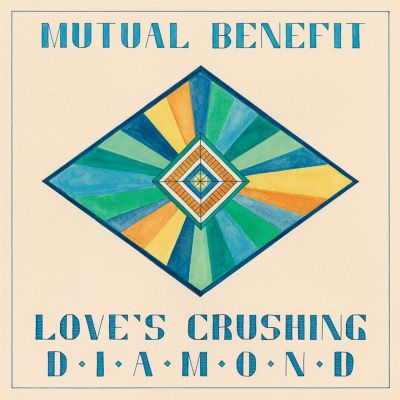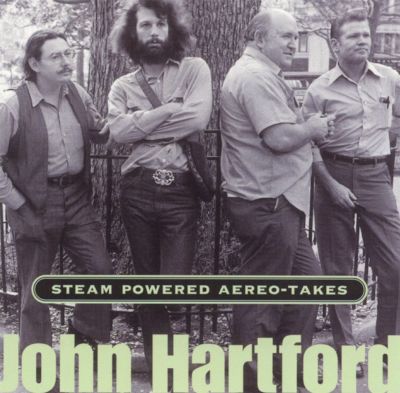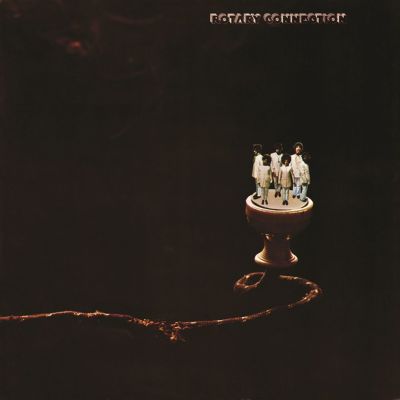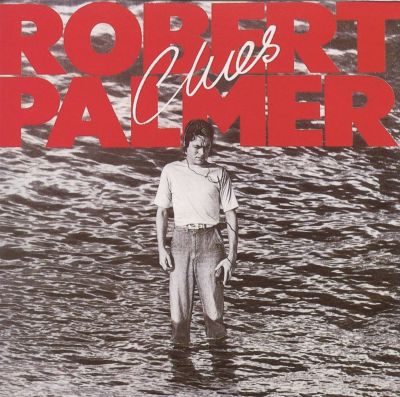Staff Picks for January 2017
January 31, 2017
Wynton Marsalis' 1981 eponymous debut is a highly-dynamic work of athletic post-bop, marked by his acrobatic trumpet chops and a surprising bent towards avant-garde improvisational flourishes. A traditionalist he might have been, but listening to his sparring solo duel with brother, saxophonist Branford on "Hesitation", it's clear his early influences were as closely aligned with Ornette Coleman and Don Cherry, as Miles Davis and Wayne Shorter.
January 30, 2017
Flowing perfectly and funny from start to finish, Live from Chicago adds an excellent album to a discography that already has two, but since it is so well-rounded, this is the best entry point into man's early work.
January 29, 2017
Calm but not dull, this full-length debut from itinerant musician Jordan Lee comes to rest in a sylvan chamber folk where wind chimes, violin, banjo, and swirling electronics co-exist fluently. It's a perfect soundtrack for anything from an early morning skinny-dip, to an apple-orchard frolic, to a much-needed mental diversion in trying times.
January 28, 2017
This multi-dimensional portrait of the artist as man and musician addresses the raw, often confused emotions explored on the also excellent American Patchwork and Black Eye Galaxy. It answers many of the spiritual and psychological questions they posed and asks new ones.
January 27, 2017
The first full-length album from this Brooklyn four-piece showcases lead singer and songwriter Alex Chappo's trebly, yearning vocals and passionate, quirky songs. Featuring tracks like the buzzy, messy funk of "Come Home" and the bluesy "5-0," it's an infectious truckload of dance-rock hippie moonshine that's impossible to turn down from the first swig on.
January 26, 2017
Amos' post-9/11 concept album arrived a year after the attacks, when the United States had already plunged into a state of fear and uncertainty about the future. Tackling America's past and present, as well as the dark side of its history and culture, she offered sonic snapshots inspired by her tours across the land. Fifteen years later, songs like "Wednesday" remain applicable as America stands on the edge of another precipice.
January 25, 2017
Steam Powered Aereo-Takes features nearly an hour of song sketches, outtakes, demos, impromptu jams, and goofing-off suites made during the recording of the 1971 LP Aereo-Plain. While it doesn't necessarily hold together as a full album, it's a fun listen with many subtle highlights, bridging the gap between traditional bluegrass songs and psychedelic hippie meanderings.
January 24, 2017
While still owing aesthetic debt to Dream Theater, Stratovarius, and Symphony X, the high standards here remind listeners that this genre sandbox is big enough for everyone to play in. This date clearly shows musical growth over the previous year's Aquarius, offering tightened arrangements and a sharpened balance between songwriting acumen and displays of instrumental prowess.
January 23, 2017
Aladdin ushered in a bigger and bolder Rotary Connection. The proper follow-up to their debut is also more streamlined and less scatterbrained without shedding the limitless approach that made its predecessor such an intrepid undertaking. Crisp drum breaks, punching horns, and soaring strings are all a part of Rotary Connection's fusion of rock and soul, which shows a greater degree of focus and a decreased reliance on psychedelic flourishes.
January 22, 2017
Here, Immortal progressed beyond their blurry, hyperspeed, under-produced past into muscular metal maturity, melding frostbitten Norwegian black metal with the intricate riffing and tempo changes of German thrash. Which isn't to say the group abandoned blastbeats or Abbath's throaty reptilian croak; within the lengthy, creatively arranged epics lies a balance of battle-ready blitzkrieg and grandiose, anthemic melodies only hinted at in Immortal's previous output.
January 21, 2017
With his sixth album, Robert Palmer subdued the soulful pop of his earlier efforts and stepped firmly onto the new wave platform, paving the way for the rock success he found in the mid-80's. The edgier sound suited the material well making Clues one of the strongest efforts of his career.
January 20, 2017
Following Slowdive's last album, Neil Halstead and Rachel Goswell gift-wrapped this charming album of desert soundscapes. Full of echoing guitars and hushed, breathy vocals, the songs are never rushed and the performances are never urgent. The whole project simmers in its own heat and never boils over.
January 19, 2017
Nearly two decades later, this double-disc beast remains the most satisfying and involved in Reznor's catalog. Sure, it's long and indulgent, but it's also a completely enveloping experience. In hindsight, it was a turning point for NIN; nothing sounded as depraved and wounded once sobriety and gym visits came into the picture. For all the typical pain and rage, The Fragile shines in moments of beauty like "The Great Below" and everything on companion EP, Still.
January 18, 2017
With Kelley Deal in rehab and the success of Last Splash still relatively fresh, Kim Deal went back in the studio for what was supposed to be a solo venture. The Amps ended up recording their only album with old friends Jim MacPherson (Breeders) and Nate Farley (Guided By Voices) to round the group out. The result is primitive and lo-fi in the best possible way, and continues to be my favorite Breeders album that wasn't actually a Breeders album.
January 17, 2017
La Planete Sauvage (aka Fantastic Planet) remains one of the most fascinating animated films ever produced. Its soundtrack, composed by Serge Gainsbourg associate Alain Goraguer, is a classic in its own right, expressing confusion and wonder through dreary yet groovy jazz-funk. The album's been sampled by numerous hip-hop and electronic producers, and it's easily available on vinyl thanks to Superior Viaduct.
January 16, 2017
Led by the distinctive piano pop of "Avenging Annie," Andy Pratt's self-titled second LP introduced the American singer/songwriter's idiosyncratic style to a wider audience and paving the way for pop grandeur of his 1976 follow-up Resolution.
January 15, 2017
This collection of the funkiest breakbeat-heavy songs from Grant Green's 1969-1971 albums offers a solid introduction to the guitarist's catalog using tracks that beatheads and crate diggers may already be familiar with in one form or another. For folks who normally turn up their nose at jazz, this can be a great, listenable and tuneful introduction.
January 14, 2017
Still the sole full-length solo album from the Depeche Mode mastermind, Counterfeit 2 is a collection of cover tunes that generally manages to embrace what makes each song special while obscuring it beneath a layer of icy detachment that should be familiar to fans of Depeche Mode's more downcast moments.
January 13, 2017
The groop's sixth album shows their fire and passion for crafting raw, smart, and tough indie rock hadn't dimmed after nearly 20 years as a band, in fact it had never burned brighter.
January 12, 2017
Recorded as Joni Mitchell was immersing herself in jazz, 1976's Hejira often sounds like a collaboration between the songwriter and bassist Jaco Pastorius, whose fretless bass work dominates the arrangements. Powerfully atmospheric, Hejira meshes Mitchell's literate, intensely personal writings with music that's deep, evocative, and intelligently sensual. While the lyrics often pitch themselves somewhere between anxiety and desire, Hejira's music finds Mitchell embracing the moment, and the pleasures of this album are abundant.
January 11, 2017
Really a left-field offering for Ashby, she played her harp but also brought the Japanese koto into the mix as well as her voice. No ordinary jazz vocal album, it is exotic, mysterious, laid-back, and full of gentle grooves and soul. Depending on how much of a jazz purist you are will give you a side to debate the place of this set in Ashby's catalogue. For those who remain open, this may be her greatest moment on record.
January 10, 2017
When Ohio Players recorded their second Westbound album, they weren't as big as they would be from 1974-1976, but their popularity was growing, and those who were hip to the band recognized them as one of the most cutting-edge acts in the funk field. A lot of bands were providing funk in 1972, but not many of them used jazz progressions as creatively as the Players use them on "Laid It," "Walked Away from You," and the title song. The best known tune is the goofy, oft-sampled "Funky Worm."
January 9, 2017
The French trio's second album of adorable French dance music is just as bright, silly, fun and French as their exceedingly bright, silly, fun and French debut.
January 8, 2017
Arguably the best document of the Flamin' Groovies' strengths as a live band (and certainly the wildest), In Person!!!! preserves one of Roy Loney's last shows with the band, as they opened for Santana (huh?) during the final week's festivities at the Fillmore West in 1971. Raucous, sweaty, and passionate, Loney's tear through "Slow Death" may be the Groovies' fiercest performance of that great song. And they play "Shakin' All Over" and "Louie Louie" like they own them.
January 7, 2017
Before this, the project of New York songwriter and bedroom-recording enthusiast Greta Kline released over 40 albums' worth of home-recorded sounds online. Her first fully realized studio album presents ten short songs of half-daydreamed, half-confessional melodic pop, delivered in a softly deadpan voice that belies the intricate countermelodies and harmonies that hide in every corner of the album.
January 6, 2017
Various Artists
Released in late 2013, Light in the Attic's I Am The Center cast a light on the new age scene by gathering impossible-to-find pieces from privately released cassettes and LPs. The collection is a revelation, as it reveals new age to be a genuine form of American folk art rather than the hackneyed industry it ended up becoming by the late '80s. Supremely relaxing and refreshing, the album is a must-own.
January 5, 2017
Largely out of print since their initial release, these Muse albums represent not only some of the most important recordings of Shaw's career, but some of the most influential and individualistic artistic statements by a jazz artist in the 20th century. With his combination of technical prowess and knowledge of the jazz tradition, as well as a keen harmonic vision for where to take his music and jazz as a whole into the future, Woody Shaw was a towering if often underappreciated figure during his lifetime.
January 4, 2017
Cuts like "Black Tongue," "Curl of the Burl," and "Blasteroid," all of which arrive in sequence at the front of the set, show a willingness to write within the parameters of 21st century pop music's dark side, while songs like "Stargasm," "All the Heavy Lifting," and "Bedazzled Fingernails," despite coming in at under five minutes, are epically arranged.
January 3, 2017
Matthews' second LP after after leaving Fairport Convention borrows heavily from Americana and country-rock, mixing a lush West Coast influence with errant strains of his native Britain.
January 2, 2017
The Echo & the Bunnymen frontman's first solo LP was haunted by the recent deaths of the singer's father as well as his band's drummer, Pete DeFreitas. Poignant yet ultimately triumphant, the album probes not only themes of loss but also rebirth. Highlights include the title track, a fairytale music box with backing vocals courtesy of the Cocteau Twins' Elizabeth Fraser.
January 1, 2017
The icy fourth LP from Iceland's most recognizable export is an intimate peek within, so delicate it sounds like a whispered secret. From the sensual "Cocoon" to the yearning "Pagan Poetry," Vespertine is dramatic, chilly, and haunting (especially on "An Echo A Stain"). On "Frosti"/"Aurora," the spirit of the album is captured perfectly in a tiny little snow globe of bliss. It's one of the most rewarding treasures in her catalog.














![La Planète Sauvage [Original Motion Picture Soundtrack]](https://fastly-s3.allmusic.com/release/mr0000482821/front/400/oFEMYSPTjb2KfyKTdiZ9cj6KsMttLlyBmmVTZ6_CLs0=.jpg)















